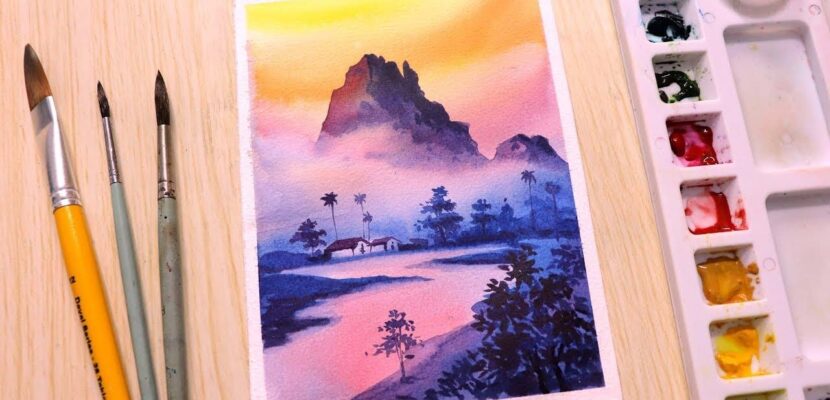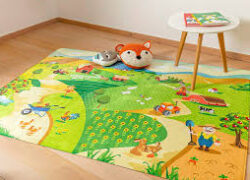Watercolor painting is a captivating and versatile art form that has been cherished for centuries. With its fluidity and transparency, watercolors offer artists a unique way to express their creativity. Whether you’re a seasoned artist or a beginner eager to dive into the world of watercolor, this guide will provide you with valuable insights and techniques to help you master the art of Watercolor painting.
Understanding Watercolor:
Watercolor is a painting method in which pigments are suspended in a water-based solution. The key to successful watercolor painting lies in mastering the balance between water and pigment. Unlike other mediums, watercolors are known for their transparency and luminosity, allowing light to pass through the layers, creating a radiant and ethereal effect.
Essential Supplies:
- Quality Watercolor Paper: Choose a heavyweight, acid-free paper to prevent warping and ensure the longevity of your artwork.
- High-Quality Brushes: Invest in a variety of brushes, including round brushes for details, flat brushes for washes, and mop brushes for larger areas.
- Watercolor Paints: Opt for professional-grade watercolor paints for vibrant and lightfast colors. A basic palette should include primary colors, secondary colors, and earth tones.
- Palette: Use a non-porous palette for mixing colors. This can be a ceramic or plastic palette that allows you to control the amount of water in your mixtures.
Techniques for Success:
- Wet-on-Wet Technique: Wet the paper before applying paint to create soft, blended effects. This technique is perfect for creating dreamy landscapes and backgrounds.
- Dry Brush Technique: Use minimal water on a dry brush for textured and detailed strokes. This technique is excellent for adding fine details and highlights.
- Layering: Build up layers of transparent washes to create depth and richness in your paintings. Allow each layer to dry before adding the next.
- Masking Fluid: Use masking fluid to preserve white areas on your paper. Once the painting is complete, gently remove the masking fluid to reveal untouched highlights.
Tips for Beginners:
- Start Simple: Begin with simple subjects and gradually progress to more complex compositions as you gain confidence.
- Practice Color Mixing: Experiment with color mixing to understand how different pigments interact. This will help you create a wide range of hues.
- Learn from Mistakes: Embrace mistakes as opportunities for learning. Watercolor is a forgiving medium, and unexpected outcomes can lead to beautiful results.
- Patience is Key: Allow layers to dry completely before adding more paint. Patience ensures that colors remain vibrant and prevents unintended blending.
Conclusion:
Watercolor painting is a delightful journey that invites artists to explore their creativity and embrace the unpredictable nature of the medium. By understanding the basics, investing in quality supplies, and practicing various techniques, you’ll unlock the magic of watercolor and create breathtaking works of art. Remember, each stroke tells a story, and with watercolors, the possibilities are as limitless as your imagination. Happy painting!




